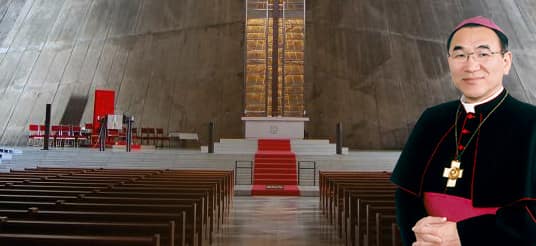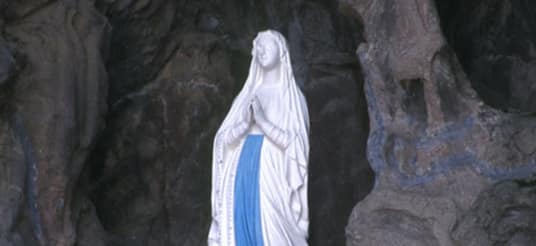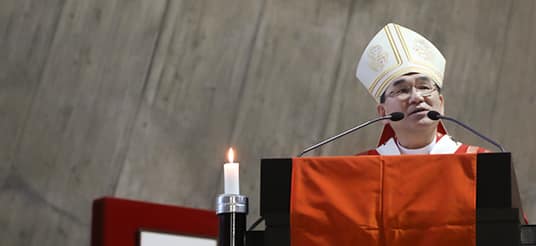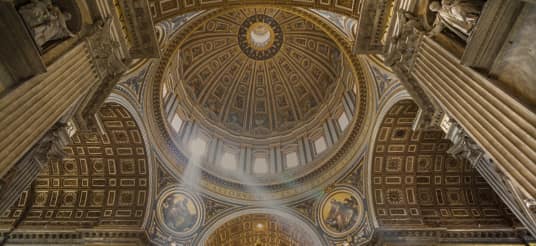Parishes

Sekiguchi Catholic Church

Name
Sekiguchi Catholic Church
Dedicated to
Mary Immaculate
Date of Establishment
January 7, 1900
Parish Priest
Paul Ryota Koike
Cooperative Priest
Jorge Manuel Macias Ramires
Permanent Deacon
Antonio Ichiro Sanda
Number of Parishioners
2,230 (as of Dec.31,2019)
Sunday Mass
Sunday 8:00 am (in Japanese), 10:00 am (in Japanese), 12:00 pm (in Korean)
Weekday Mass
Monday-Saturday 7:00 am (in Japanese)
Sunday School
Sunday after 10:00 Mass
Study
“Introduction” Sun.:11:15 /13:30, Sat.:10:30 /13:30 /16:30
Address
3-16-15 Sekiguchi, Bunkyo-ku, Tokyo 112-0014
Telephone
03-3945-0126
Fax
03-3945-2798
Website
https://catholic-sekiguchi.jp/
Facilities for the Handicapped
Sloped Entrance, Elevator, Toilet, Head phone rental system for people with hearing difficulty.
Directions
10 minutes walk from Gokokuji Station on Yurakucho Subway Line, exit No.6. 15 minutes walk from Edogawabashi Station on Yurakucho Subway Line, exit No.1a. Take Tokyo City Bus No.61 to Shinjuku Sta. from JR Mejiro Sta., or Tokyo City Bus heading for Nerimashakomae from JR Shinjuku Sta., get off at Chinzansomae stop. 1 minute walk from the stop. Parking available. Map (small size 73kb) Map (large size 124kb) GoogleMap
Parish History
History
Archbishop Pierre Marie Osouf had searched fore a land at the central area of Tokyo thinking to build the Cathedral of Tokyo Archdiocese in his neat future for the development of Tokyo and Catholic Church. In 1886 Archbishop Osouf found 15840㎡(4,800 tsubo) of the demolished ground of Yorinori Ooinokami Matsudaira, the feudal lord of Shishido Ibaragi County of Hitachi domain and purchased it at Sekiguchidai. This is the present site of Tokyo Cathedral. In 1882 Fr. Jean Pierre Rey arrived in Tokyo and after working at Asakusa Church and Honjo Church. He became the professor of Tsukiji Seminary with much interest in school education. In 1887 Father Rey established St. Mary Institute of French Language and Handicraft at the site of Sekiguchidai. In 1888 bakery factory, in 1889 the dressmaking room and in 1892 plasterer had been added at the same site. In 1893, the attached chapel of St. Mary Institute became independent as Koishikawa St. Mary Catholic Church and it was operated mostly as a Parish. In 1896, Father Rey started to build a new church building called Sekiguchi church as the largest church in Tokyo Archdiocese with the help of his students of St. Mary Institute of French Language and then it has completed in 1899. The design of the chapel was graceful gothic style made by Fr. Rey and he himself took charge of the field director during the construction. On 10th of September Archbishop P.M. Osouf had offered the dedication mass of the new church grandly in the bleu sky and formed as Sekiguchi Parish. As the foundations of the six main churches in Tokyo have been formed the next plan was to build mutual support among them to develop the influence of the church over Tokyo Archdiocese. On 12th of June in 1900 the five days retreat had been held for lay missionaries at Tsukiji Church. On 14th of June, the Great Feast Sunday of the blessed sacrament, the procession of the Blessed Sacrament had been held by the parishioners of the six churches for the first time inside the church yard of Sekiguchi church. More than 800 people had joined the procession many policemen also had guarded the area to watch over the street stalls and food shops, In 1912, Installation of Tokyo Archbishop Rey was held at the Sekiguchi church, the new St. Mary Catholic Church After his Installation he didn’t live at the Tsukiji Cathedral but worked at the Sekiguchi Church which was the new start of Tokyo Archdiocese for the development in new age. In 1920, the Cathedra transfered to Sekiguchi. On December 8 1964, the present St. Mary’s Cathedral was completed. The cathedral has capacities of holding all the rituals of Diocese and the Sekiguchi parish.
Present Situation
At present Tokyo Cathedral works as the central church of Tokyo Archdiocese and also has international character in Tokyo. We seek to give the place of spiritual rest in prayer to every people including foreign workers, families, residents and visitors at Sekiguchi Church and St. Mary Tokyo Cathedral. (Tokyo Archdiocese News Feb. 1992)





